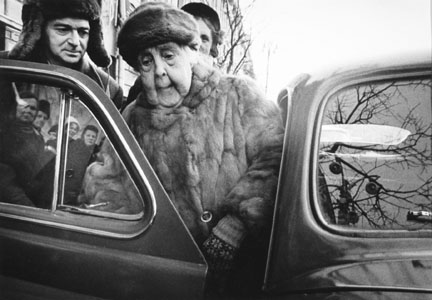About the Photographer
Klein, William
American, April 19, 1926 - September 10, 2022
I photograph what I see in front of me, I move in close to see better and use a wide-angle lens to get as much as possible in the frame… A technique of no taboos: grain, contrast, blur, decomposition, accidents, whatever happens.
— William Klein 1955
After years spent in Paris, William Klein returned to his native New York from 1954 to 1955. Simultaneously drawn to the city's energy and repulsed by it, he planned a series of pictures to capture the vitality and vulgarity he found so striking. "I saw the book I wanted to do as a tabloid gone berserk, gross, grainy, over-inked, with a brutal layout, bull-horn headlines," Klein wrote of Life is Good & Good For You in New York, the book of pictures from that period, "This is what New York deserved and would get." Made in 1955 and included in that book, 4 heads, Thanksgiving Day, New York was one of the last pictures made before Klein's return to Paris. It suggests the intensity and complexity of New York, while the disconnect between people in such close proximity hints at Klein's ambivalence toward the city and its inhabitants.
William Klein was born in New York in 1926. As a high school student, he cut class to play pool and visit the Museum of Modern Art. His introduction to Europe came when he spent two years in the US Army as a radio operator stationed in Germany and France. He studied sociology at City College of New York, and enrolled at the Sorbonne in Paris in 1948 under the Franco-American Friendship Program to study symbolism, the history of theater, and existential philosophy. While in Paris he spent a brief but influential period studying painting under Fernand Léger. Later he took up film-making, abandoning photography in 1965, and created such documentaries as Broadway by Light (1958); Who Are You Polly Maggoo? (1966); Mr. Freedom, Muhammad Ali The Greatest, and The Little Richard Story (1979); and The Messiah (1999). He returned to still photography in the early 1980s.


